9+ SAMPLE Product Price Proposal
-
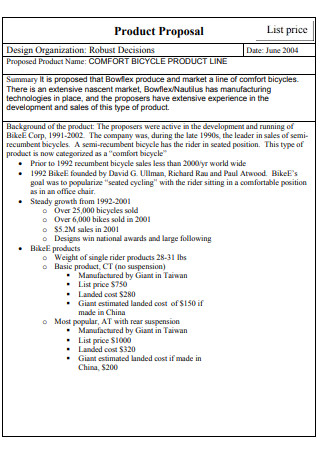
Product List Price Proposal
download now -
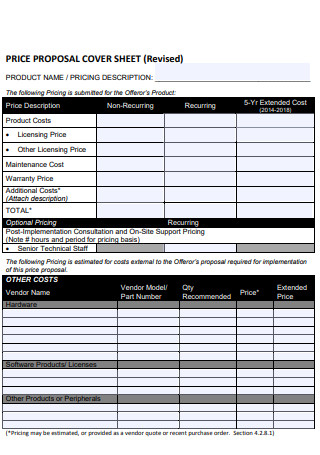
Product Price Proposal Cover Sheet
download now -
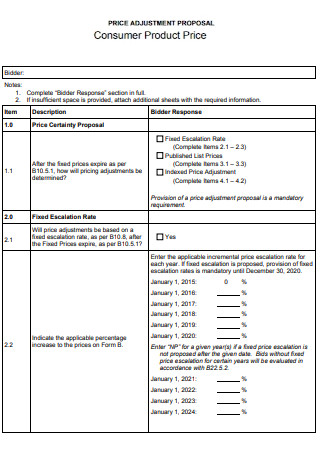
Product Price Adjustment Proposal
download now -
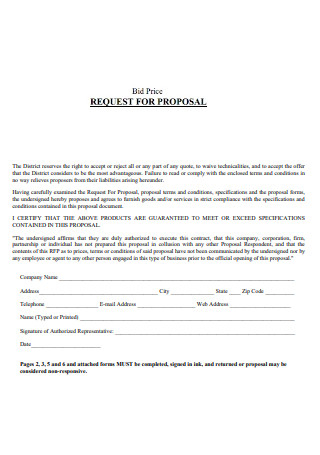
Product Bid Price Proposal
download now -
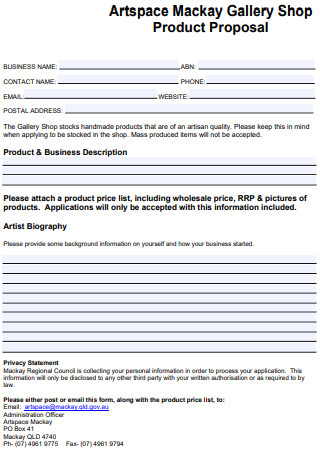
Business Product Price Proposal
download now -
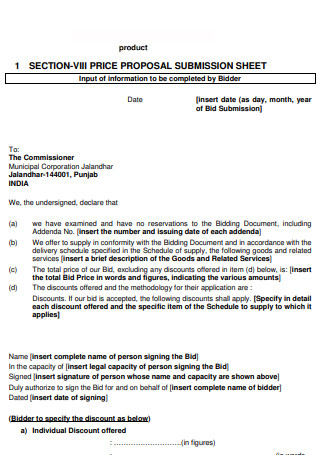
Product Price Proposal Submission Sheet
download now -
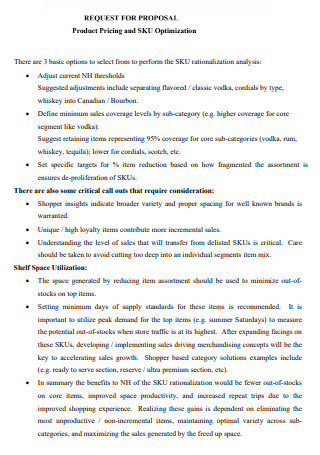
Product Price Optimization Proposal
download now -
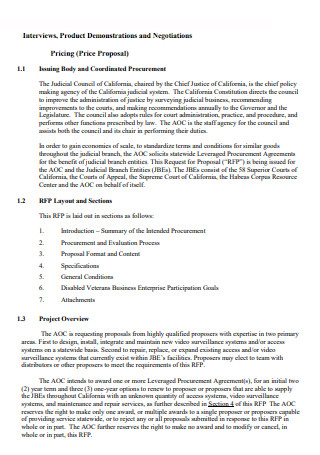
Product Demonstration Price Proposal
download now -

Product Price Settlement Proposal
download now -
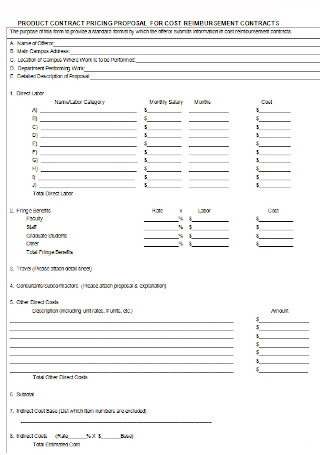
Product Contract Price Proposal
download now
FREE Product Price Proposal s to Download
9+ SAMPLE Product Price Proposal
What Is a Product Price Proposal?
Determining a Fair Price Point
Product Price Proposal Strategies
How to Make a Product Price Proposal
FAQs
Why are brand products more expensive?
Why is a pricing strategy important?
What is a price proposal?
What Is a Product Price Proposal?
A Product price proposal is a preliminary offer for the price of a potentially marketable product by a contractor. It’s a document that establishes product sales that the developer will charge before estimating the potential costs that will be incurred as a result of finishing the manufacturing of a certain product. Your price suggestion for the product must be clear, concise, and readable. It should include both direct and indirect expenses associated with marketing the product, as well as evidence that you provide exceptional value for any money spent. You can check out the price proposal sample for additional reference.
Determining a Fair Price Point
Lumen Learning states that price is important to marketers because it represents marketers’ assessment of the value customers see in the product or service and are willing to pay for a product or service. You have various methods to analyze the statistics when comes to pricing products. However, finding the right method may require some trial and error. Setting a price plan for a new product or service is indeed a crucial step in the development process. Pricing should be considered as soon as you decide to pursue a concept because it will define how much you can manage to spend on the project.
Product Price Proposal Strategies
You may start thinking about how you might utilize price to enhance your market share by knowing about the pricing techniques which other company owners are utilizing today. This curated list goes through pricing strategies that you may utilize to collect and retain more leads. Keep in mind this does not mean you are restricted to them alone. Many company owners will change their approach or combine different tactics over time. A variable pricing strategy may be required for one product or service than for another. With the following tactics, it simply takes a little trial and error to discover which ones work best for your company.
How to Make a Product Price Proposal
After going through all the curated lists prepared for you in this article, you are more than well-equipped to begin preparing a price proposal letter that will contain all the necessary information before presenting it to the respective reader. But it is not easy to think of the appropriate contents while being pressured on the time and deadline the document is required. This is why the article provides you with various samples and templates that act as a helping hand in assisting you further. Moreover, with the guide below, you can define each section of what to input in the document.
-
1. Professional Details
As for the first step, you will have to state the professional details regarding your company. This refers to the official company name, the logo you are using, the address, and contact information that is linked to your Company. You should also include a company description with regards to what your company does and a brief history to give readers, both those familiar and unfamiliar with your product to be more aware of what you can provide. By presenting and providing this information first and foremost, the readers will appreciate being informed ahead of which company you are associated with. Which also acts as a cover letter.
-
2. Market Value of Product
Various products are available in the market and it is quite rare for a product to be unique and not have any similar functioning products in stock. So investors or customers may not turn to your direction right away, especially if you are selling something that is already widely known in the Market. This section of the proposal defines the actual value of the product in the market which will help readers of the proposal be aware of why you chose to produce the specific product. Don’t worry if you run out of space because the next section will help out this part.
-
3. Elaborate on the Product
This next section is to further explain and provide a foundation on why you chose to sell that product in the first place. As mentioned, you will have numerous competition and it could be risky to market your product when customers already have a brand they opt to purchase from. You can list in this step how beneficial your product is and how it could be advantageous when purchased. Whether it is additional health benefits or an environmentally friendly material, you can further explain it here.
-
4. Pricing List
Finally, this section is the most important for this particular type of proposal. As the name states, you are providing the pricing of the product you are selling which means this is the part where you may end up stuck or having to think over for a long time. Prices may not be easy to set right away and you may need to change or adjust them once in a while. But the important thing is you should Research so that you can set an appropriate price which will pique the interest of the customers and also not scare them away from purchasing it.
-
5. Terms and Condition
As any proposal cannot be completed without discussing and agreeing on the terms that both parties will need to be committed to, you cannot forget the terms of the agreement section. This section will lay out the necessary responsibilities and actions that should be fulfilled by both sides. The terms states must not be taken lightly and instead, both would have to commit to it. You can also define your company’s Price List with regards to how the payment will be handled and the period in which the completed amount will be transacted.
FAQs
Why are brand products more expensive?
As mentioned above, certain customers will prefer a product sold by a more well-known brand than a common product. Since store-brand goods are less expensive than name-brand alternatives, there is a prevalent misunderstanding that they are of lower quality but this is not the case. One reason name-brand items are much more expensive is that marketing those products to the general public takes money. Consumers pay the price for commercial jingles, pamphlets, billboards, and other forms of advertisement that ingrain themselves in their minds. The majority of store-brand products are designed to closely resemble their name-brand counterparts.
Why is a pricing strategy important?
Pricing is crucial since it determines the worth of your product for both you and your clients. It’s the quantifiable pricing factor that tells clients if their effort and cash are worth it. Your pricing methods may have an impact on your long-term profitability. It turns out that presentation is the key to a convincing proposal or estimate pricing. You can present a price in an exceptionally persuasive manner and win over customers, or you can present the same price differently and never make a sale. Without a pricing strategy, you could end up costing your company in the long run.
What is a price proposal?
Not to be confused with a product price proposal, a price proposal is how you set your pricing rates to a customer or client on how you charge to provide them a service on your skills and experience. It’s critical to understand the difference between a pricing proposal and an estimate. Estimation is a best-guess figure for the cost of a project to a potential client. A price proposal is a comprehensive document that includes accurate raw material, labor, tax, and other general overhead expenses quotations. It often includes a company’s suggested markup and is given in competitiveness with other competitors bidding on the same project.
Proposals were meant to persuade and convey to the reader what you, regardless of whether you are a freelancer or associated with a company, can offer them. In this case, as a product price proposal, you are meant to convince your client, customers, investors, or generally the readers of what you are offering the market and how much you are putting the price on it. It is important to set the prices before even planning for a sales proposal letter because a thorough budget equates to adequate profit.
